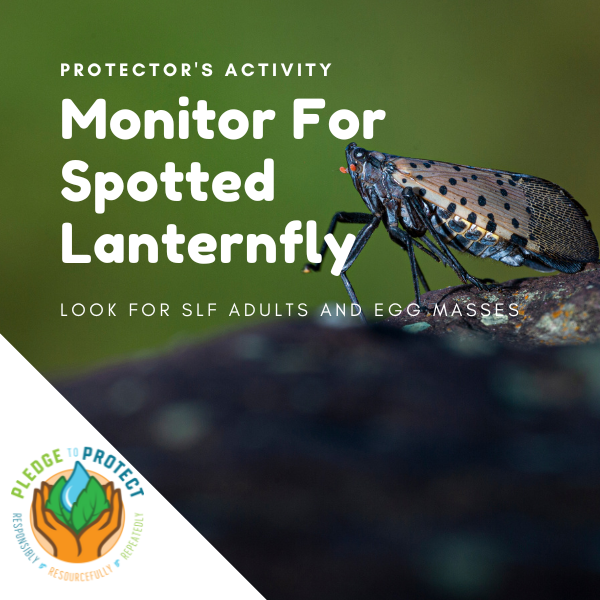What's The Issue?
The spotted lanternfly (SLF) is an invasive insect that can devastate New York’s agricultural and tourism industries and threatens our forests. This invasive planthopper feeds on over 70 different plant species. The biggest agricultural concerns are the impacts SLF will have on grapes, hops, apples, blueberries, stone fruits, and maple trees.
SLF feeds in large numbers and excretes honeydew that attracts sooty molds; these molds interfere with plant photosynthesis and impact crop growth and yields. The honeydew puts off a foul odor and attracts stinging insects which can restrict your enjoyment of parks and your own backyard if SLF is present.
SLF was first discovered in Pennsylvania in 2014 and despite quarantine efforts, it has since spread to several states along the Northeast including parts of New York state (view a distribution map).
The spotted lanternfly has a high spread potential, as the insect lays its eggs on nearly any flat surface, and adults and nymphs can easily hitchhike on vehicles; therefore, those traveling from areas where SLF is present can easily and unknowingly spread SLF to new areas.
What You Can Do to Help?
- Adopt a Grid Square to join a state-wide effort to monitor for SLF and tree of heaven.
- Check your vehicle, and any other equipment you’re transporting for SLF adults, nymphs, and egg masses.
- View this SLF Spread Prevention Checklist to learn of other items to check for SLF.
- Take walks around your property and neighborhood in search of SLF and egg masses.
- If you encounter tree of heaven, take a closer look as SLF tends to favor this tree (see below for identification).
- Use the pre-made social media graphics at the bottom of this blog to help spread the word about SLF!
- Take pictures of the insect, egg masses, or infestation you see and, if possible, include something for size, such as a coin or ruler.
- If possible, collect the insect. Place in a bag and freeze, or in a jar with rubbing alcohol or hand sanitizer.
- If feasible destroy the insect/egg mass especially before traveling if found on a vehicle.
- Report findings to NYiMapInvasives.org, fill out a Sighting Form, or email spottedlanternfly@agriculture.ny.gov.
What to Look For
Spotted lanternfly presence can be identified by egg masses that are one inch long and appear to be brownish-gray and waxy or are brown and scaly; massive honeydew build-up under plants that may form black sooty mold; sap oozing or weeping from wounds on host plants that appear wet and may give off a fermented odor.


Early-stage SLF nymphs are black with white spots, they range in size depending on their life-cycle stage. SLF nymphs turn red with white spots just before they transform into winged adults. SLF adults are 1 inch long and ½ inch wide with greyish-colored forewings and red hindwings with black spots; their upper wing portions are dark with white stripes. Adult SLF usually appears in July. In the fall, SLF adults lay egg masses that are an inch long with a smooth brownish-gray waxy appearance, as the egg masses age they turn brown and scaly.
Tree of heaven is an invasive tree that is favored by the spotted lanternfly as a host plant. If you encounter TOH please check it for signs of spotted lanternfly and their eggs. Learn more about tree of heaven.
Help spread the word by using these pre-made social media graphics and captions on your social media channels! To download, right-click over the image to save it and then upload it onto your favorite social media platform.





Did you enjoy this blog post? Take our Pledge to Protect and get monthly emails showcasing actions you can take to protect your favorite hiking trails, paddleways, forests, garden, and community from the impacts of invasive species!
Take the Pledge to Protect
The Pledge-to-Protect is a fun, positive, inviting, engaging and rewarding way to participate in invasive species prevention and management.
|
|







Social Media Toolbox